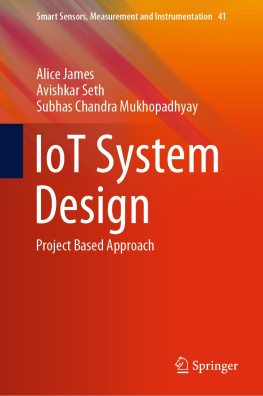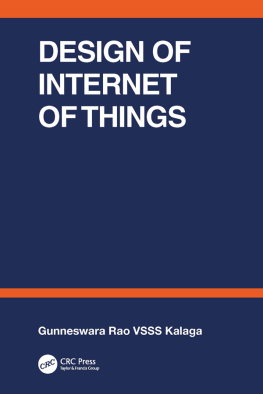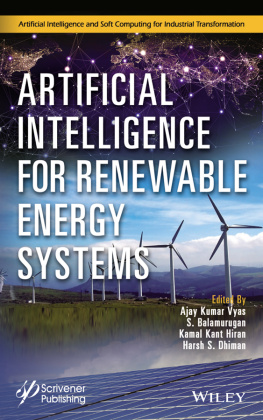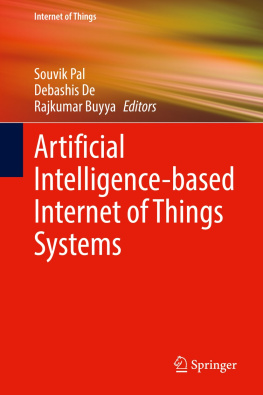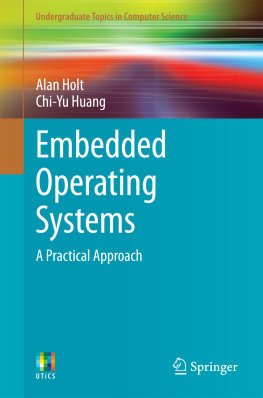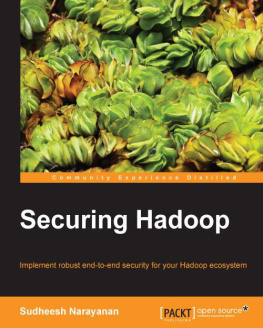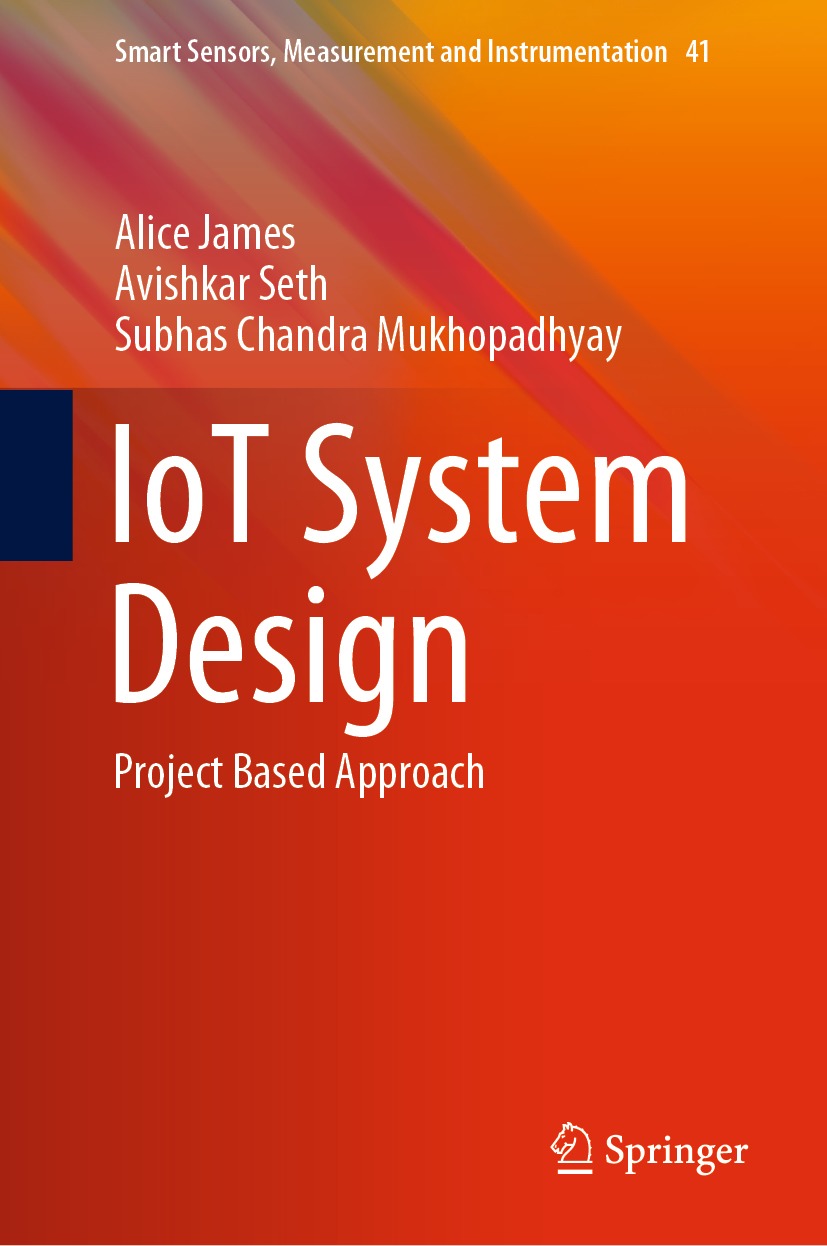Alice James
School of Engineering, Macquarie University, Sydney, NSW, Australia
Avishkar Seth
School of Engineering, Macquarie University, Sydney, NSW, Australia
Subhas Chandra Mukhopadhyay
School of Engineering, Macquarie University, Sydney, NSW, Australia
ISSN 2194-8402 e-ISSN 2194-8410
Smart Sensors, Measurement and Instrumentation
ISBN 978-3-030-85862-9 e-ISBN 978-3-030-85863-6
https://doi.org/10.1007/978-3-030-85863-6
The Editor(s) (if applicable) and The Author(s), under exclusive license to Springer Nature Switzerland AG 2022
This work is subject to copyright. All rights are solely and exclusively licensed by the Publisher, whether the whole or part of the material is concerned, specifically the rights of translation, reprinting, reuse of illustrations, recitation, broadcasting, reproduction on microfilms or in any other physical way, and transmission or information storage and retrieval, electronic adaptation, computer software, or by similar or dissimilar methodology now known or hereafter developed.
The use of general descriptive names, registered names, trademarks, service marks, etc. in this publication does not imply, even in the absence of a specific statement, that such names are exempt from the relevant protective laws and regulations and therefore free for general use.
The publisher, the authors and the editors are safe to assume that the advice and information in this book are believed to be true and accurate at the date of publication. Neither the publisher nor the authors or the editors give a warranty, expressed or implied, with respect to the material contained herein or for any errors or omissions that may have been made. The publisher remains neutral with regard to jurisdictional claims in published maps and institutional affiliations.
This Springer imprint is published by the registered company Springer Nature Switzerland AG
The registered company address is: Gewerbestrasse 11, 6330 Cham, Switzerland
Preface
We live in an age where Internet technology has enabled a global network in which people and devices are closer than ever before. The origin of the idea of the Internet dates back to the early 1960s when scientists and researchers were trying to find a means to create a global network to share information. However, the Internet was truly enabled and commercialized with the creation of the World Wide Web in 1989. With its wide compatibility among different types of technologies, Internet technology soon became an available feature in most devices. The characteristic feature of Internet functionality that is enabled in these things led to the development of the term Internet of Things or IoT. The thing may be an entity, a physical item, or a device with the ability to transmit/receive data over a network. The hardware is integrated with sensors, firmware, and other features with the goal of communication between different devices and systems over the Internet.
The applications of IoT in todays world have increased as innovation pushes the paradigm for new technology. Consumer applications of IoT such as vehicular networks, smart health care, smart wearables, and home automation have grown in recent times. In the industrial sector, with the introduction of Industry 4.0, IoT applications have skyrocketed. It includes applications in transport, manufacturing, agriculture, and supply chain. Some of the new terms coined include Enterprise IoT (EIoT), Internet of Medical Things (IoMT), and Ocean of Things to name a few.
With the level of importance and wide application area, the need to research and design such systems is essential and challenging. For somebody who is just starting to learn about the concept of IoT, it can be a confusing subject. To add to the confusion, the number of resources one needs to study to get even a basic grasp on the topic is tremendous. With many of the resources only providing a theoretical perspective to these concepts, the practical understanding of a user could be lacking.
This book aims to provide a brief introduction to the core concepts of IoT with unique detail to the system design process. It provides a practical approach to designing and developing these IoT systems. The intended readers of this book include college and academics who are specialized in electronics engineering, telecommunication engineering, and information technology, data scientists, researchers working with electronic systems, hobbyists, professionals, and anybody interested in a project-based approach to IoT.
The majority of the material from this book was used to teach undergraduate and postgraduate engineering students at Macquarie University, Sydney. The students performed the laboratory exercises in groups of 23 in a time frame of 34 h. The practicals provide a mix of guided exercise, theory, and self-performing tasks to enable a deeper understanding of the concepts. In the initial weeks, all the students perform a common task based on the weeks guidelines. However, in the concluding weeks, the student groups perform an IoT group project. In this manner, the material in this book provides a sufficient introduction to building a practical IoT-based project for users.
The complete book is divided into twelve chapters. It is our view that expertise in designing IoT systems is achieved by using it in different applications. Many types of projects have also been detailed. With hardware projects, a special emphasis on software-based simulation projects has been shown for readers having minimal access to hardware components.
Chapter aims to provide a brief overview of the IoT systems design. It explains the role IoT plays in the big picture. The chapter introduces the fundamentals of sensors, a fundamental element of IoT, and building blocks of IoT, and also describes the purpose of the book.
Chapter describes a project implementation towards designing an IoT-based device. The chapter goes into great detail to explain the execution process of the IoT project, providing step-by-step guidelines along with source code for the user to perform it on the first go. A great skill that comes in handy when prototyping is mastering the ability to troubleshoot any problem. The topics also go into detail to mention the common debugging issues and challenges faced while performing the projects.
Chapter provides essential inputs to the design perspective of building an IoT project. Designing an IoT node requires careful technical considerations that need to be fulfilled before the deployment of a device. The chapter looks into the individual elements that constitute an IoT node, from sensors to data analytics, providing design considerations and application-specific estimations. A key parameter to note when designing is making appropriate assumptions whenever necessary.

